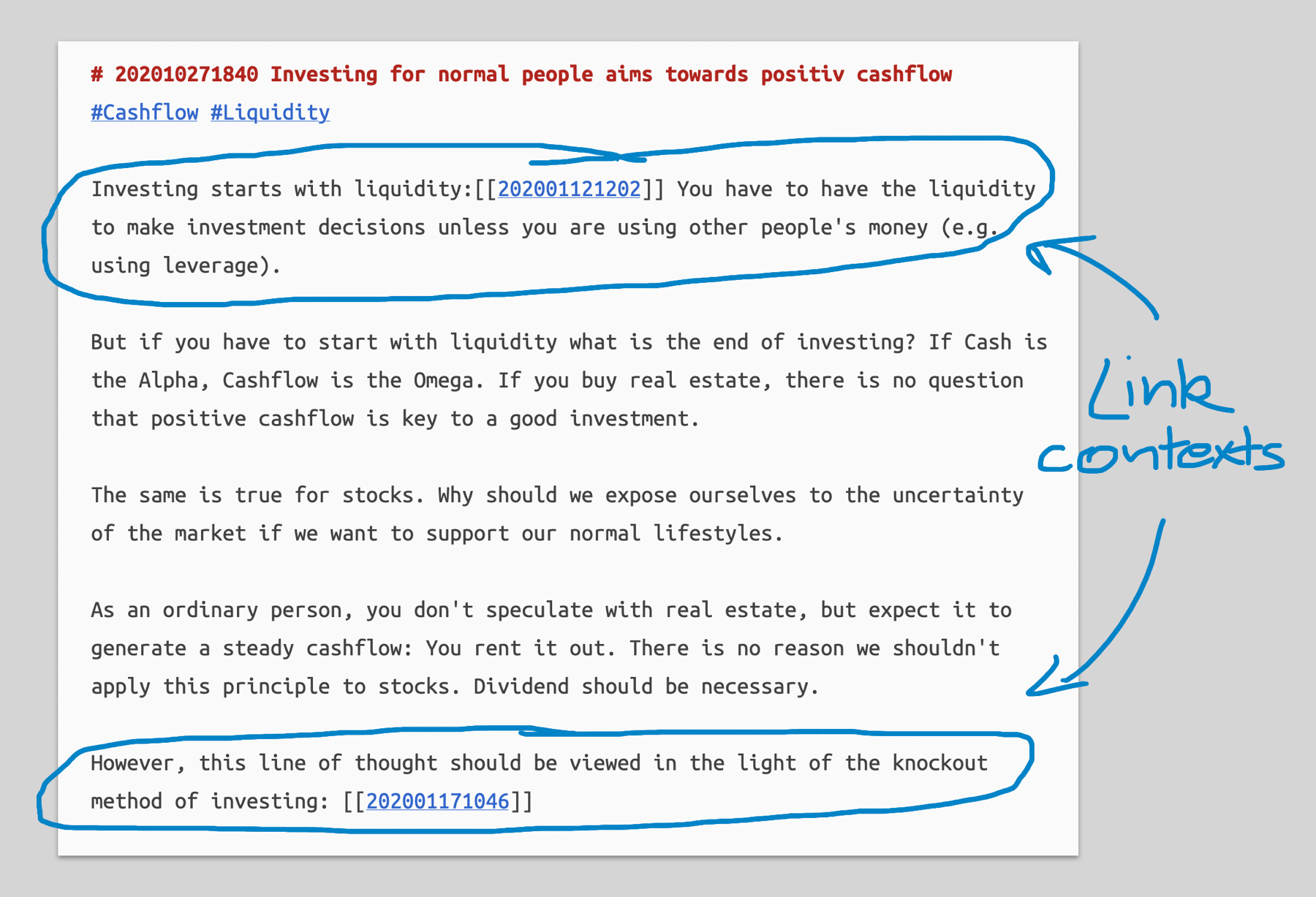RE: Backlinks Should Be Context-Rich
 RE: Backlinks Should Be Context-Rich
RE: Backlinks Should Be Context-Rich
Jared Gorski wrote a response to my article “Backlinks are bad links”. Since it’s a short and concise response, a re-response is warranted. He summarised my point fairly and sufficiently, so I don’t need to repeat myself here. If you are not familiar, please read the article linked above. I’ll reply to Jared’s post point by point.
Howdy, Stranger!
Comments
<#/philosphizing>
"All links want to be forward links, all forward links want to be interstitial."
I've slipped into grand anthropomorphizing.
Paraphrasing Stonie Davis
**From Article **
In reality, there is no such thing as a 'forward' link or a 'backward' link. Ideas form relationships, and we use annotation to codify and solidify those relationships. I'm even hesitant to call them links. It's a false dichotomy to separate links into arbitrary distinctions such as forward and backward.
In the note list, of this example, on the left is the list of zettel in relationship with
Link Association Levels 202008222000. Together they form a web of intrigue, a constellation of material matter.Titles of your zettel are not the descriptors of your links. Two different skill sets are used in curating each. This post discusses the skills needed for titling, and more can be said on the skills needed for linking.
Linking and titling make up the core of what makes or breaks your zettelkasting. In the early stages of zettelkasting, many things want attention, and it takes a while to catch on to the subtleties of linking and titling. (Some of us take FOREVER!)
Don't beat yourself up. Remember, as you know better, you'll do better. All ideas/zettel are malleable.
<#philosphizing/>
Will Simpson
My peak cognition is behind me. One day soon, I will read my last book, write my last note, eat my last meal, and kiss my sweetie for the last time.
My Internet Home — My Now Page
A rather platonic discussion. Which is more real? The idea or its manifestation in our world? Or: The link or the connection between two knowledge entities?
I am a Zettler
The discussions around forward/backward linking always feel somewhat abstract to me: not really about use cases.
@Sascha points out something that resonates with me: the linked notes form a network. For me, this is nice, since I can think about my notes as a graph.
This means the following:
So far, not much help on making this less abstract though...
Graphs are cool since you can traverse graphs in all sorts of ways to retrieve information about the network:
Traversing the network helps my Zettelkasten surprise me. A really cool example is to use shortest path (see the minimal lattice between two notes) to visualise the lattice like Jethro's braindump, where instead of manually clicking through the links to create the lattice, the lattice can be found automatically and viewed.
Likewise, simply extracting notes for further processing is also much easier, since you get them in-order that a note is found. How edges are traversed (forward or backward) also gives different notes, that again may be surprising.
Long story short, I don't really care about forward/backward linking anymore, since backlinking for me is just a technical thing.